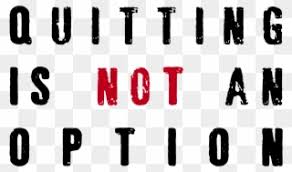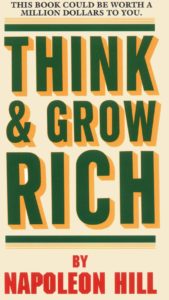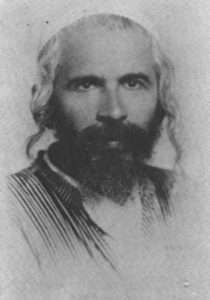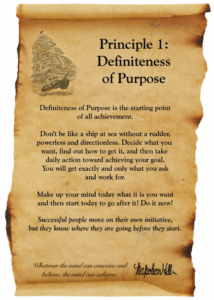All posts by sarametzger@comcast.net
Stop Procrastinating Already and Put a Plan Together
Procrastination is “the avoidance of doing an important task which needs to be accomplished.”
We’ve all been there. There’s something we want to do, something we want to finish, something we want to accomplish, and we just keep putting it off. What’s the deal about that anyway? Laziness? Apathy? It’s something that really isn’t that important at the moment, so we put it off until it becomes important, very important. Then it’s more likely to get done.
Let’s talk about it some more today. To tell you the truth, I have been procrastinating about writing this article. And then suddenly there was something I decided I really needed to do and so I put a plan together to get something done. And so the procrastination article became more important to get completed.
Why do people procrastinate?
“Procrastination is not just avoiding or delaying a task,” says David Ballard, head of the American Psychological Association’s Center for Organizational Excellence. “It also has to include an aspect that’s counterproductive, irrational or unnecessary.”
“Procrastination. This is one of the most common causes of failure. “Old Man Procrastination” stands within the shadow of every human being, waiting his opportunity to spoil one’s chances of success. Most of us go through life as failures, because we are waiting for the “time to be right” to start doing something worthwhile. Do not wait. The time will never be “just right”. “Start where you stand, and work with whatever tools you may have at your command, and better tools will be found as you go along.” Napoleon Hill from Think and Grow Rich
Reasons for and suggestions to overcome procrastination:
- Timing – Many people are inherently more productive at certain times of the day. So work around these natural productivity ebbs and flows when you schedule your days. If you know you work better in the mornings on certain kinds of tasks, schedule them for then. Don’t try to do it at a time when you’re tired and it’s harder for you to do.
- Getting overwhelmed by big tasks – Many people procrastinate because they’re anxious about the outcome of a project, don’t think they can complete it well or fear failure. So, it may help to break it into smaller sub-tasks.
- Delayed Gratification – Some people have a hard time thinking of a project as important or rewarding unless they’re squeezing it in just before a deadline. In this case, try breaking a long-term assignment into multiple smaller ones.
- Easily distracted – Optimize your environment and minimize multi-tasking. Don’t fall into the trap of “juggling two or three tasks at the same time so that you finish one, but are still in the middle of the other. Never-ending stream of tasks” may make it feel like you’re never actually completing anything, which deprives you of the satisfaction of being done. Take the time to wrap one thing up, put it away, take a breath, walk around for a minute and stretch before you step into the next thing so can move on having refreshed yourself.
- Struggling with something larger – Sometimes, what looks like procrastination may actually be a symptom of something more serious, such as depression, anxiety or attention problems. If your behavior is causing you distress or significantly affecting your performance at work, school or home, don’t be afraid to consult a professional. Get some additional support and help so you can manage in a way that that it’snot getting in the way of your job performance or functioning.
- Simply hitting a wall – Even the most efficient workers have days when it’s harder to finish tasks. With any luck, these lulls will strike when you don’t have a deadline looming and you can “cut your losses and take a break”. Focus on taking care of yourself with sleep, exercise, proper nutrition and enjoyable, non-work-related activities,
Ways to stop procrastinating:
- Take five minutes to list out the things “you were going to do tomorrow” On a blank sheet of paper, note several important activities you are delaying or have put on hold.
- Look at your list and do one thing on it right now. Put the energy you’ve been directing toward excuses into the activity you’ve been avoiding. Action eliminates anxiety.
- Pick a time (today) to work on the list. If getting started is the hard part for you, set aside a designated time slot, at least 30 minutes, for work specifically on one job, project or personal goal that you’ve been “leaving until later.”
- Quite trying to be perfect. What counts is quality of effort, not perfect results. Don’t let yourself get bogged down with a preoccupation fir perfectionism.
- If what you’re putting off involves other people, talk to them. Your reasons for delaying action might be imaginary. Lack of communication often turns molehills into mountains.
- Ask yourself, What’s the worst thing that could happen if I did this today? Do you fear the consequences associated with the action you’ve been avoiding? The worst-case scenario most likely would be a minor inconvenience or a temporary setback.
- Imagine how you’ll feel once you do whatever it is you’ve been postponing. You will have freedom from anxiety, nagging pressures. Freedom from self-doubt. Accomplishing put-off tasks will give you a great boost of confidence and energy.
More Resources
- The Mastery of Procrastination – listen to this audio from Napoleon Hill’s Book, Think and Grow Rich. It will help with your challenge to overcome procrastination
- Procrastinating-tips
- The Real Reasons People Procrastinate
- Stop-procrastinating-tips
- Procrastination: A Scientific Guide on how to stop Procrastination
“48 Ways (and more) to Wisdom”
Wisdom and how to get it…
Welcome to the 48 Ways To Wisdom sourced from the Pirkei Avot (Ethics of the Fathers) 6th Chapter *see below** and expounded on by Rabbi Noach Weinberg zt’l. The Pirkei Avot lists 48 different ways to achieve wisdom; each one of which will be explained below.
BEING ORGANIZED
 Being Organized
Being Organized
It’s definitely a skill that anyone can develop even if not inclined to be organized. It really helps if you want to become organized. Like anything else, your success rate will increase the more you want to do that thing that you want to do.. In this case being organized. This article will give you a bunch of ways to get there. Hopefully one of these ways will resonate with you and you will be able to follow it with Joy! (Lol)
Napoleon Hill, Legend in His Time
Napoleon Hill “Think and Grow Rich” and so much more…
by Napoleon Hill is one of my top 3 best personal development books to read. Period.
It might even be No. 1. It is a must for your library if personal development is what you want to achieve…whether it be in you business, your relationships, your LIFE, whatever you want to achieve. No matter who you are. Period. Continue reading Napoleon Hill, Legend in His Time
Practice Mindfulness and Live in the Moment
What is Mindfulness? 
Mindfulness means directing our attention or experience as it unfolds. It is about maintaining a moment, a moment awareness of our thoughts, feelings, bodily sensations, and surrounding environment. When we practice mindfulness, our thoughts tune into what we’re sensing in the present moment rather than rehashing the past or imagining the future.
Benefits of practicing mindfulness —
- trains us to respond skillfully to whatever is happening, good or bad
- improves our thought process, feelings and concerns for others
- helps us perform better
- reduces anxiety; lowers stress
- helps us feel calmer and less depressed
- slows aging
- reduces physical pain
- restores emotional balance
- increases resilience
- strengthens adolescent mental health
- uncovers our own blind spots
- improves sleep quality
- reduces fatigue
- improves concentration
There is more than one way to practice mindfulness, but the goal of any mindfulness technique is to achieve a state of alert, focused relaxation by deliberately paying attention to thoughts and sensations without judgment. … All mindfulness techniques are a form of meditation.
Mindfulness Excercises
- Walking meditation is easiest done somewhere with fewer distractions. Focus your attention, maybe first on the sensation of your feet touching the ground, then on your breath or move the attention around your body, part by part. Work on developing a sort of relaxed attention.
- Mini-break … Turn away from whatever you are doing, and sit for a moment noticing the sensations in your mind and body. Notice how you feel and what you hear. Try to be as present in that moment. If your mind wanders off to tasks that you have to complete or starts working over things that happened yesterday, let these go.
- Brush mindfuly… try to focus on that brushing chore and really experience it. When brushing your teeth, notice how the brush moves over your teeth and the taste of the toothpaste. When brushing your hair, notice how the brush moves over your hair and how the tangles slowly disappear.
- Just one breath … At any time during the day, take a moment to focus on one breath. Breathe in and then breathe out. Focus your attention on how that feels, where you notice the air moving, how your chest and abdomen move.
- Listen mindfuly … Listen carefully to the sounds that are around you. In the city, the police sirens, train announcements, horns honking. In the countryside the trees rustling, birds calling or a gate creaking. What can you hear right now? Or, put on some music and really listen to it for a short period. Try to hear the music without thinking about it.
- Eating meditation … When you take the first bite of any meal, take a moment to really pay attention to the taste. Look at the food carefully, feel the textures in your mouth, smell it and notice how your body reacts to it. You’re not looking for a revelation from this experience. Think of it more like a mental push-up for your mind.
You can also do some of the following:
- Teach yourself to be mindful by training your mind, practicing being mindful during your routine activities, keep your practice sessions short.
- Learn mindful habits like meditation, practice it with your partner, listen carefully, monitor your health.
- Practice being mindful by being aware of your feelings, focusing on breathing, taking a break, using visualization, and using the right language.
- Understand mindfulness by understanding what it is, learning about it, changing your habits, and acknowledging your progress.
Mindfulness, practiced in various religious as well as secular traditions
Mindfulness has been intertwined with Hinduism for millennia. From the Bhagavad Gita’s discussions of yoga to Vedic meditation, the history of Hinduism reads in part like a history of mindfulness. The Hindu tradition is rich with varied types of meditation including mantra meditation, transcendental meditation, yoga meditation, and self-enquire and “I AM” meditation.
Mindfulness may be even more involved in Buddhism than it is in Hinduism, as mindfulness (Sati) is considered to be the first step towards enlightenment in Buddhism. In fact, some sources even consider the English word “mindfulness” to be a simple translation of the Buddhist concept of Sati. The Four Foundations of Mindfulness, as taught by the historical Buddha and ever since, are key things that are practiced: our bodies, our feelings, our minds themselves, and phenomena / the world around us. There are three Parts to mindfulness in Buddhism: Paying Attention on Purpose, Living in the Present Moment, and Paying Attention Without Passing Judgement
The basic premise of mindfulness in Islam is that there is a pure core (THE FITRAH) within every one irrespective of caste, creed and religion. Mindfulness in Islam has six major components For details on these six components include their essence and practice click here.
1. TADABBUR – Seeking the wisdom in knowledge
2. TAFFAKUR – Reflecting on what one knows and observes
3. TASABBUR – Consistent patience with gratitude
4. TAZKIYAH – Purification of the heart
5. TASHAKKUR – Gratitude i
6. TAQWA – Mindful of the Divine
Judaism also speaks to mindfulness in that mindfulness and a peaceful, balanced soul is an objective in Jewish life. The tools for attaining it are subtly woven into the tapestry of Torah knowledge. The Hebrew word “shalom” for example, implies not just peace, but also completion, perfection, wholeness. The daily prayers culminate in a request for peace. Prayer is an advanced form of meditation. The Hebrew word for prayer, tefillah, implies connecting to and bonding with one’s spiritual source. The prayerbook (siddur), can be seen as a highly sophisticated, structured guide to cultivating awareness of the presence and the power of G‑d.
Commentaries on the life of Abraham suggest that when he sent his offspring to the East bearing gifts, these gifts included aspects of meditative practices that eventually surfaced in Far Asian spiritual teachings. Some speculate that a Hindu caste of holy men is called “Brahmans” after the Abrahamic tradition that spawned them. Abraham’s son Isaac was a meditator. When his bride Rebecca first saw him, he was “meditating in the fields”—and the Biblical accounts of his practice of “digging wells” are understood to signify his delving into the depths of consciousness. Many of the early holy men in Jewish history were shepherds who chose the pastoral lifestyle in order to be able to meditate in the fields.
Talmudic sages and mystical Kabbalists had a longstanding tradition to meditate before and during prayer. Specifically, the chassidic practice of hitbonenut meditation involves actively contemplating a spiritual concept until it expands one’s creative intelligence, deepens awareness, and becomes an indelible part of a person’s consciousness.
More Resources
- History of Mindfulness
- How to practice mindfulness (Buddhism)
- Mindfulness exercises
- Jewish Meditation videos
- On Mindfulness and Jewish Meditation
- Be Mindful
- Health Benefits
- Thirteen Ways
- Getting Started
- 10 More Ways
- Six Ts of Mindfulness in Islam
- 3 minute body scan meditation on soundcloud
- 5 minute breathing meditation on soundcloud
Did this help you? If so, it would be great if you shared it with your friends and colleagues and don’t forget to comment below and/or share on Facebook.
Live the Good Life with Sara – Helping You Succeed!
Skype: Sara.Metzger
Email: sarametzger@comcast.net
Facebook Fan Page: https://www.facebook.com/sara26.metzger?fref=ts
Contact me if you want more information, if you want to Live the Good Life, if you want to get started on your goals, and if you want to accomplish these goals.
Law of Attraction
Personal Development According to Rebbe Nachman of Breslov by Gedale Fenster
Embrace and be Passionate about LIFELONG LEARNING
.Embrace and Be Passionate about Lifelong Learning because…
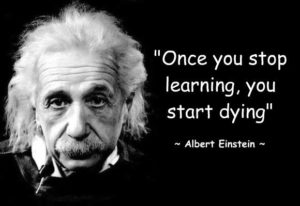 I think Einstein knows what he’s talking about.
I think Einstein knows what he’s talking about.
Don’t You?
Continue reading Embrace and be Passionate about LIFELONG LEARNING
